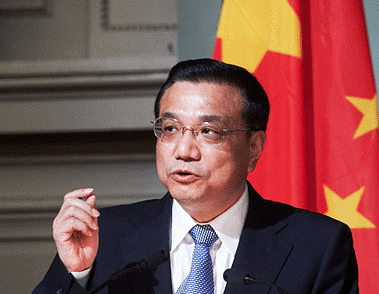India Seeks $1.1 Billion Reparation After MSC Fuel Spill in May
The southern Indian state of Kerala has sued MSC Mediterranean Shipping Co. for the environmental damages caused by a ship capsizing off its coast, according to a court document.

 Why has there been a relatively sudden demand spike for dry bulk shipping since June 2013? The origins lead directly back to an “Unofficial Economic Stimulus” plan instituted by Premier Li Keqiang of China.
Why has there been a relatively sudden demand spike for dry bulk shipping since June 2013? The origins lead directly back to an “Unofficial Economic Stimulus” plan instituted by Premier Li Keqiang of China.
It has been reported in Forbes and other publications that during the first two weeks of August, Chinese Premier Li Keqiang silently instituted a new round of economic stimulus in what a senior official at the state-owned China Development Bank has called an “Unofficial Economic Stimulus”. The economic plan delivers funds to key provinces and cities through the country’s banking system instead of making direct fiscal disbursements.
The Chinese Central Government has thus far delivered the new round of “Unofficial Economic Stimulus” through two state banks. China Development Bank (“CDB”) is making large infrastructure loans to three provinces, Hebei, Jiangsu, and Qinghai. Hebei will use the capital for slum renewal and an airport development; Jiangsu’s funds will be used to further urban infrastructure and the province’s regional transport network; and the funds for Qinghai will be invested in roads, railways and waterways.
The South China Morning Post has described the capital expenditures as “the latest sign of an effort by Beijing to prop up growth with targeted bursts of lending”. Another loan agreement signed between the Agricultural Bank of China and the Shanghai city government provided 250 billion yuan to establish a “Hong Kong-like free-trade zone” and build Shanghai Disneyland. This loan is equal to 12.5% Shanghai’s GDP for 2012.
Even though Premier Li Keqiang has previously stated that as long remains in a stable growth pattern, the Chinese Government would not institute an economic stimulus program, he recently elaborated further in a manner that ”put a line in the sand”. On July 9th he stated, “Economic operations should be managed in such a way that ensures that the growth rate, employment and other indicators don’t slip below the lower limit and inflation does not exceed the upper limit.” On July 23rd, Premier Li Keqiang further stated his “bottom line” for growth was 7%.
The Chinese National Bureau of Statistics maintains that China grew 7.5% in the second quarter of 2013, thus it would appear the Premier sees little need for the Chinese Government to inject additional capital into the economic system unless the reported GDP statistic is fictitious or the economy is continuing to fall towards the 7% GDP growth rate.
However, analysts have reported the Chinese Central Government has been flooding the economy with money, at least, since early July. J Capital Research’s Anne Stevenson-Yang notes that, “There is a genuine acceleration in infrastructure spending and many announcements about how the government will accelerate ‘slum renovation’, water projects, and roads.” Ms. Yang further highlights there have also been an increase in risky loans, those to already overleveraged local government financing vehicles (“LGFVs”).
While economic stimulus is considered an enemy of the economic structural reforms that are necessary for China’s economy, Premier Li Keqiang’s actions at the end of June 2013 enabling a bailout of China largest lender, Industrial and Commercial Bank of China (“ICBBC”), the deleveraging programs and the economic reforms the Chinese Central Government had also put in place earlier in the year were “thrown out the window”. It appears that fundamental economic reform will again be postponed.
Over the course of the last decade, the U.S. has relied on the “Greenspan Put” and the “Bernanke Put”.
Supported by the U.S. Federal Reserve, each time the economy experienced a negative wealth effect, “cowboys in white hats” and lots of money “rolled into town to save the day.” As with its economic stimulus package in 2008, it is clear China has again established within its Central Government a new savior, the Premier Li ”Keqiang Put”. Given the challenges that exist within China’s banking system and the amount of non-performing loans (“NPLs”) and required deleveraging of its real estate sector, the “Keqiang Put” will be required to be massive and expose the Chinese economy to substantial long-term financial risks.
The “Unofficial Economic Stimulus” program has had an immediate effect. The amount of steel for infrastructure overtook steel used in housing recently, an indication that government stimulus, not property construction, is now driving growth and charterers have caused enquires for ships and rates for dry bulk shipping to increase.
The question is whether the current “Unofficial Economic Stimulus” program will be enough to prevent further dry bulk shipping bankruptcies or just defer the inevitable?
In the meantime, Capesize and Panamax dry bulk shipowners have at least been able to prop themselves up and peek out from their grave to see a little sunlight. Until now, shipowners have surmised the spate of chartering was the result of low inventory levels or a result of ”real” economic expansion. It’s not. This increase demand for shipping is a liquidity driven event caused by the Chinese Central Government’s concern for economic growth.
We should expect more “Ghost Cities” or “Ghost Infrastructure Projects. From the perspective of Jim Chanos, President of Kynikios Associates, shipowners get to run on the “Treadmill to Hell” a little longer.
Image via Friends of Europe, republished under Creative Commons License
Other recent articles posted on the Castalia Advisors’ blog include:

Sign up for gCaptain’s newsletter and never miss an update

Subscribe to gCaptain Daily and stay informed with the latest global maritime and offshore news


Stay informed with the latest maritime and offshore news, delivered daily straight to your inbox
Essential news coupled with the finest maritime content sourced from across the globe.
Sign Up